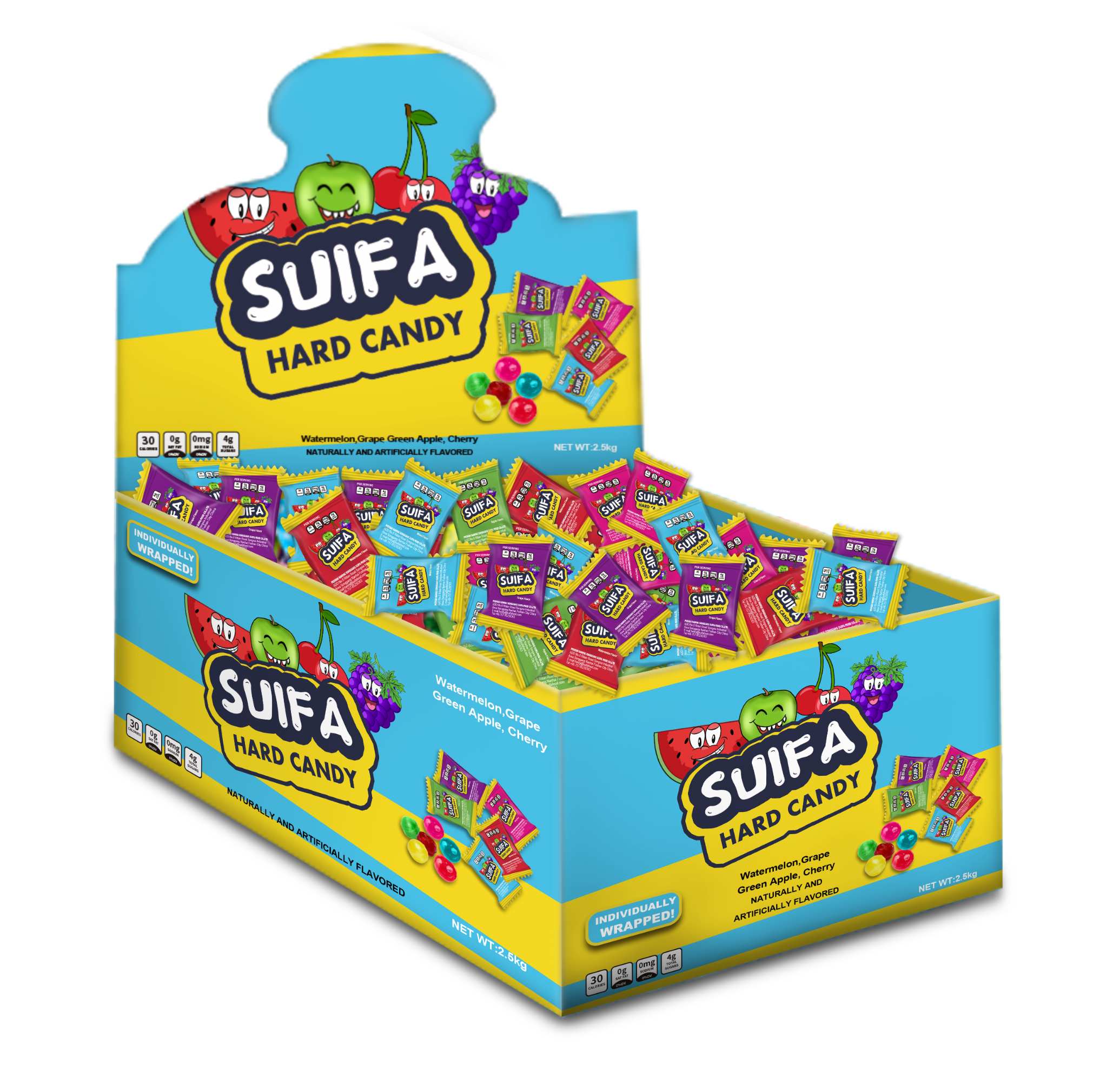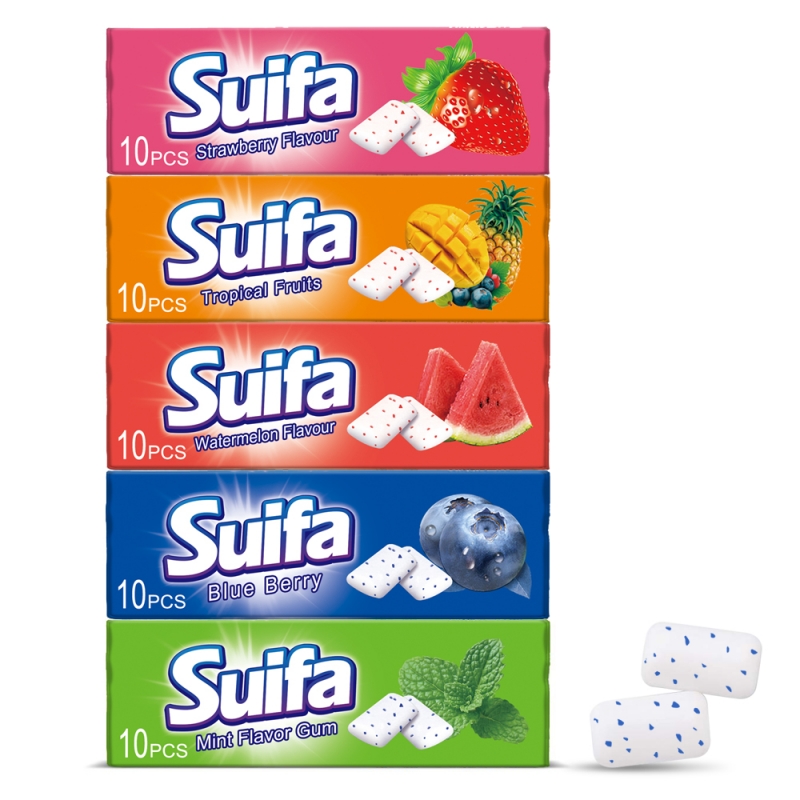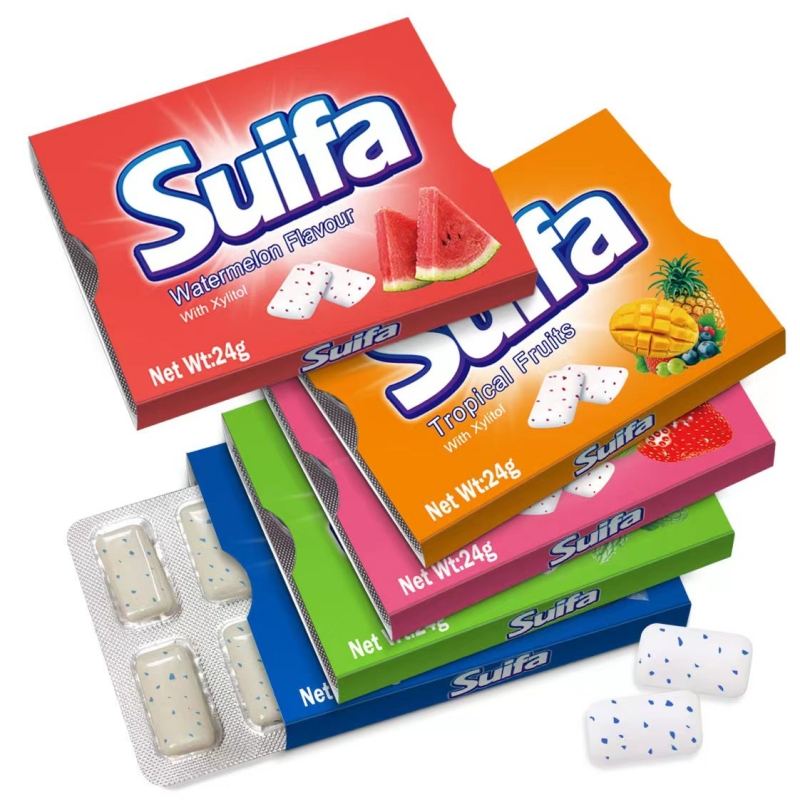How Soft Candy is Made in the Factory? | Soft Candy Making Process
- Categories:Suifa news
- Author:
- Origin:
- Time:2023-06-06
- Views:0
(Summary description)
How Soft Candy is Made in the Factory? | Soft Candy Making Process
(Summary description)
- Categories:Suifa news
- Author:
- Origin:
- Time:2023-06-06
- Views:0
How Soft Candy is Made in the Factory?
| Soft Candy Making Process
Soft candy has its own special characteristics. It has a texture that is both chewy and soft, with a richness that melts in your mouth. Whether it's fudge, fruit chews or toffee, soft candy is a beloved sweet that is enjoyed by countless people around the world. But have you ever wondered how these delicacies are made? In this blog, we will explore the process of making soft candy and show you how these mouth-watering sweets are created. So, let's get started!
Ingredients:
Soft candies come in a variety of flavors, each with a unique blend of ingredients. The primary ingredient in soft candy is sugar. However, other crucial elements such as corn syrup, gelatin, and water play a crucial role in determining the consistency, texture, and flavor of the candy. The ingredients are blended based on the desired flavor and texture of the candy. Fruits, vegetables and other flavorings are also added for natural color and flavor boost.
Mixing and Cooking:
Once the ingredients are selected and the recipe is determined, the mixing process begins. In a large kettle, the melted sugar and corn syrup are mixed and gradually warmed to completely dissolve the sugar, adding pectin or gelatin depending on the recipe. The next step is to cook them to the desired temperature, which depends on the type of candy being made. Once the mixture has been heated and mixed for the proper amount of time, it is transferred to a pot. In the pot, the temperature is raised to a higher level to evaporate the water and form a thick syrup-like consistency.


Cooling and Flavoring:
After the mixture has reached the desired consistency, it is cooled down to a lower temperature and flavorings are added. This can include fruit purees, extracts, or other flavorings. Colorings are also added at this stage to give the candies their specific colors. The mixture is stirred until the flavorings and colors are evenly distributed.

Shaping and Molding:
After the temperature of the mixture has reached the desired point, the liquid forms are transferred to the molding machine to give them their final shape. The molding machine runs at high speed and the liquid forms are molded into their desired shapes, the molds are usually made of silicone or other materials that can withstand high temperatures. As the mixture is poured into the mold, it remains warm and pliable. Once the candy has hardened to the desired texture, it is removed from the mold and checked for quality. Once the candy is molded, it is coated with a special starch that helps prevent sticking.

Drying:
The candies are then placed in a drying room with controlled humidity and temperature and left to dry. This stage can take a few hours to several days, depending on the type of candy, its size, and moisture content. This process ensures the right amount of moisture retention, which is essential for making the candy soft and chewy.

Packaging:
Once dried, the candies are clean and free of any starch or impurities, and they are ready to be packaged. Soft candies are typically bagged into small and colourful packets that come in a variety of sizes. These packets can be transparent or opaque, depending on preference. Once packed, the treats are then ready for shipping or to be displayed at candy stores.

These are the main processes of soft candy production. It is important to note that one important aspect of the production process is quality control. Candy manufacturers use quality control measures to ensure that each batch of candy meets the same standards for texture, flavor and appearance. These measures include the use of sanitary equipment and maintaining a clean environment during the candy-making process.
The main machines used in the soft candy making process:
Cooker: The cooker is a large kettle that is used to heat and cook the candy mixture. It is typically made of stainless steel and has a heating element at the bottom. The mixer blade inside keeps the mixture moving to prevent scorching.
Cooling and Mixing Machine: This machine is used to cool down the cooked candy mixture and add flavorings and colors. It consists of a large mixing bowl and paddle that rotates slowly to evenly distribute the flavorings and colors.
Extruder: An extruder is a machine that forces the candy mixture through a nozzle to give it its desired shape. It can be adjusted to produce different shapes and sizes of candy.
Forming Machine: A forming machine is used to shape the candy into its final form. It works by pressing the candy mixture into molds or cutting it into pieces using a series of rollers and blades.
Drying Room: Once the candy has been shaped, it needs to be dried to remove any excess moisture. A drying oven is used for this purpose, which circulates hot air around the candy to speed up the drying process.
Packaging Machine: Once the candy has been dried, it is ready to be packaged. A packaging machine is used to fill bags or boxes with the candy and seal them for freshness.
In addition to these main machines used, other equipment may be used in the soft candy production process, depending on the specific needs of the manufacturer. For example, some manufacturers may use sugar dissolvers to dissolve sugar more quickly or color mixers to blend different colors. Some quality inspection equipment, such as metal detectors and x-ray machines, are also used to check candies for iron contamination during the production process.
Conclusion
The production of fudge requires careful attention to detail at each step, as well as knowledge of the ingredients and their properties, to ensure that the final product meets the manufacturer's quality standards. We hope this blog has given you some insight into the fudge making process.
Scan the QR code to read on your phone
We're Here to Help, Submit Your Inquiry
Choose Suifa, Boost Your Gum Project!
Discover excellence gum products at our factory. We create custom solutions for our customer. Join us for exclusive insights, customized products, and partnerships. Leave your contact info and shape the future of gum together!
Choose Suifa, take your bussiness to the next level!












